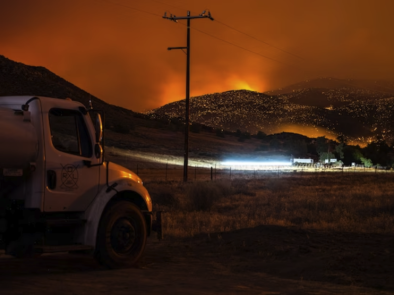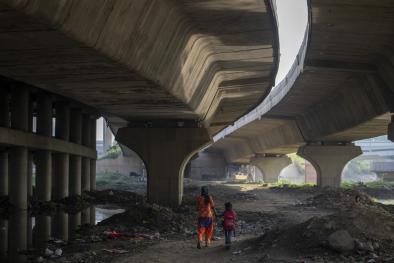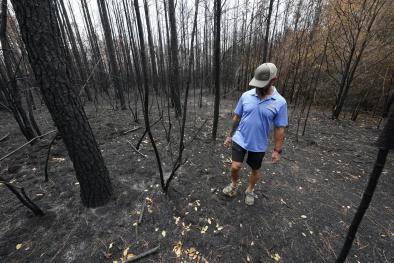Increasingly frequent wildfires linked to human-caused climate change, UCLA-led study finds
Study key findings & significance
- The study found that the 68% of the increase in vapor pressure deficit across the western U.S. between 1979 and 2020 was likely due to human-caused global warming.
- The findings suggest that human-induced climate change is the main cause for increasing fire weather in the western United States.
- The researchers analyzed the so-called August Complex wildfire of 2020, which burned more than a million acres in Northern California. They concluded that human-induced warming likely explains 50% of the unprecedentedly high VPD in the region during the month the fire began.
Author quotes
The findings suggest that human-induced climate change is the main cause for increasing fire weather in the western United States.
“And our estimates of the human-induced influence on the increase in fire weather risk are likely to be conservative,” said Rong Fu, director of UCLA’s Joint Institute for Regional Earth System Science and Engineering, a collaboration with NASA’s Jet Propulsion Laboratory.
“Our results suggest that the western United States appears to have passed a critical threshold — that human-induced warming is now more responsible for the increase of vapor pressure deficit than natural variations in atmospheric circulation,” Fu said. “Our analysis shows this change has occurred since the beginning of the 21st century, much earlier than we anticipated.”
Abstract
Previous studies have identified a recent increase in wildfire activity in the western United States (WUS). However, the extent to which this trend is due to weather pattern changes dominated by natural variability versus anthropogenic warming has been unclear. Using an ensemble constructed flow analogue approach, we have employed observations to estimate vapor pressure deficit (VPD), the leading meteorological variable that controls wildfires, associated with different atmospheric circulation patterns. Our results show that for the period 1979 to 2020, variation in the atmospheric circulation explains, on average, only 32% of the observed VPD trend of 0.48 ± 0.25 hPa/decade (95% CI) over the WUS during the warm season (May to September). The remaining 68% of the upward VPD trend is likely due to anthropogenic warming. The ensemble simulations of climate models participating in the sixth phase of the Coupled Model Intercomparison Project suggest that anthropogenic forcing explains an even larger fraction of the observed VPD trend (88%) for the same period and region. These models and observational estimates likely provide a lower and an upper bound on the true impact of anthropogenic warming on the VPD trend over the WUS. During August 2020, when the August Complex “Gigafire” occurred in the WUS, anthropogenic warming likely explains 50% of the unprecedented high VPD anomalies.
Related Content






